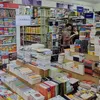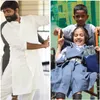‘Be a great friend to your work and your practice’: Success tips in creativity from the Roopantar artists
In Part II of our photo essay from the India Habitat Centre, we feature more artworks along with curator and artist insights.
Launched in 2014, PhotoSparks is a weekly feature from YourStory, with photographs that celebrate the spirit of creativity and innovation. In the earlier 775 posts, we featured an art festival, cartoon gallery, world music festival, telecom expo, millets fair, climate change expo, wildlife conference, startup festival, Diwali rangoli, and jazz festival.
The exhibition titled Roopantar (‘transformation’) features the works of Dattatreya Apte, Kavita Nayar, Anandmoy Banerji, Sushanta Guha, and Moti Zharotia. These five printmakers also conducted talks and sessions at the venue, New Delhi’s India Habitat Centre (see Part I of our coverage here).

“Curating this show has been an enlightening and enriching experience for me personally. To see the work of all the five artists through five decades is illuminating for the next generation of artists,” curator and art historian Dr Alka Pande tells YourStory.
The exhibition aims to celebrate, validate and display the many creative processes of printmaking. This includes aquatints, lithographs, woodcuts, and etching.
“Art connoisseurs appreciated the exhibition. There was also engaging interaction with younger artists,” Anandmoy Banerjee says.

As trends in Indian art today, Pande points to the resurgence of cultural nationalism. “Art never fails to evoke an emotional response, whether it is decorative, religious, secular, or even propaganda,” she observes.
“Globally, Indian art has not yet realised its full potential. Contemporary art is still being largely collected by Indians both in India and abroad,” she adds.
She calls for Indian art to be shown more abroad so that people familiarise themselves with it and understand the deep symbolism embedded therein. “Contemporary Indian artists need to be more rooted in their sensibilities and aesthetics,” she suggests.

Indian artists need be embedded strongly in their own ethos. “This begins with understanding their own cultural diversity and plurality of their nationhood,” Pande recommends.
The artistic journey is also full of ups and downs, twists and turns. “While working on prints, there could be many mistakes. Artists have to be very careful, but mistakes happen. It is natural,” Moti Zharotia explains.
Choosing high-quality materials carefully can help avoid some failures. “But no doubt we learn from our mistakes when they happen. We have to practice continuously to move ahead towards perfection,” Zharotia affirms.

“Artists always learn from mistakes. Printmaking is full of surprises, and learning from mistakes and accidents gives us new chapters, practices and theories,” Banerjee says.
The exhibitors also offer tips and words of advice for aspiring artists with respect to finding inspiration, loving one's work, and looking for recognition.
“Get inspired and follow your inspiration in life. The nature, degree and impact of this inspiration is totally dependent on each individual,” Dattatreya Apte advises.

“If you work over the years and practice regularly, it helps your dream come true. Be a great friend to your work and your practice,” Banerjee advises.
Success would be a balance of recognition and acceptance in society. This includes awards and accolades.
“Self-satisfaction is the most important criterion for success. You will find a place for yourself within ten years,” he affirms.

Working continuously will lead to visibility and sales. There are also many opportunities available via scholarships and fellowships.
Patience and perseverance are the two qualities that aspiring artists must have, according to Kavita Nayar.
“Art is exploration of the soul through varied experiences from life. It is a search within and beyond, and is also a process of meditation,” Nayar signs off.
Now what have you done today to pause in your busy schedule and harness your creative side for a better world?










(All photographs were taken by Madanmohan Rao on location at the exhibition.)
Edited by Suman Singh










